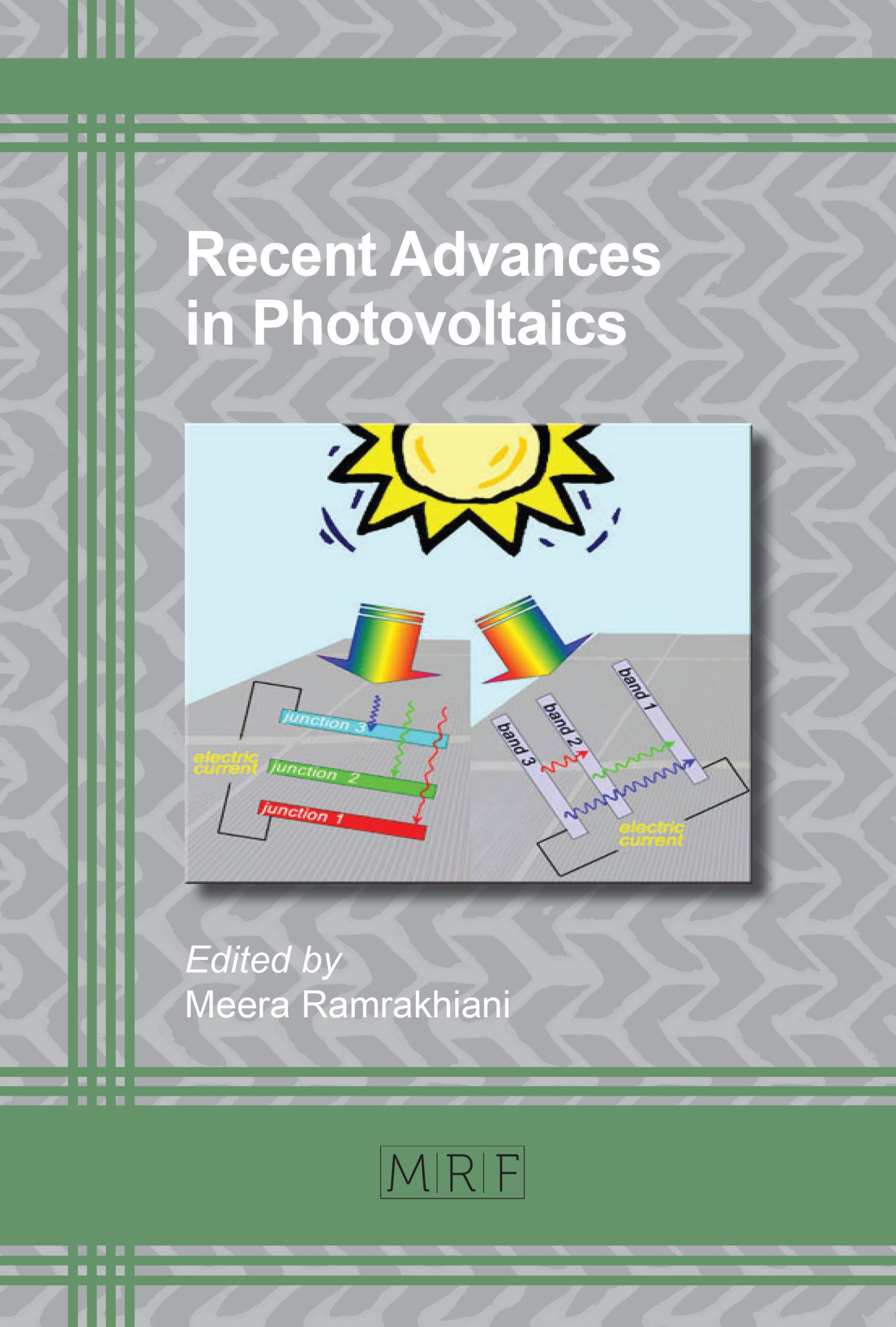Fill factor analysis of organic solar cell
Rashmi Swami, Sanjay Tiwari
Solar cell is a device used to convert light into electricity. It can be made by organic and inorganic materials. Its most important parameters are open circuit voltage, short circuit current, fill factor and conversion efficiency. This paper is based on the analysis of factors that affect the fill factor of organic solar cell using MATLAB. Fill factor is calculated using conventional organic solar cell model without series and shunt resistances and constant light generated current for two different cases –first using Exponential dark characteristic and second using Polynomial dark characteristic. We get that for exponential V-I relationship, increase in ideality factor n will reduce the fill factor and for polynomial V-I relationship, increase in m will increase fill factor. A large dependence of light generated current Iph on increasing operating voltage would cause a significant drop in fill factor. Increase or decrease in an additional factor would accordingly change fill factor. Dark current can be varied in two ways, one by varying mobility and other by varying injection barrier heights. In both the cases fill factor increases with .
Keywords
Organic Solar Cell, Fill Factor, Ideality Factor, Open Circuit Voltage, HTL, ETL
Published online 8/2/2017, 10 pages
DOI: http://dx.doi.org/10.21741/9781945291371-12
Part of Recent Advances in Photovoltaics
References
[1] B. K. Crone, P. S. Davids, I. H. Cambell and D. L. Smith, “Device model investigation of bilayer organic light emitting doide”, J. Appl. Phys., 84, (2000), 1974. https://doi.org/10.1063/1.372123
[2] B. Mazhari, “An improved solar cell circuit model for organic solar cells”, Solar Energy Materials & Solar Cells, 90, (2002), 1021. https://doi.org/10.1016/j.solmat.2005.05.017
[3] C. M. Ramsdale, J. A. Barker, A. C. Arias, J. D. MacKenzie, R. H. Friend and N. C. Greenham, “The origin of open circuit voltage in polyfluorene-based photovoltaic device”, J. Appl. Phys, 92, (2002),4266. https://doi.org/10.1063/1.1506385
[4] D. P. Grubera, G. Meinhardtb and W. Papousekc, “Modelling the light absorption in organic photovoltaic devices”, Solar Energy Materials and Solar Cells, 87, (2005), 215-223. https://doi.org/10.1016/j.solmat.2004.08.011
[5] J. A. Barker, C. M. Ramsdale, and N. C. Greenham, “Modeling the current-voltage characteristics of bilayer polymer photovoltaic devices”, Physical Review B 67, (2003), 075205. https://doi.org/10.1103/PhysRevB.67.075205
[6] J. C. Scott and G. G. Malliaras, “Charge injection and recombination at the metal-organic interface”, Chem. Phys. Lett., 299, (1999), 115. https://doi.org/10.1016/S0009-2614(98)01277-9
[7] J. Wagner, T. Fritz, and H. Bottcher, “Computer modelling of organic thin film solar cells exciton model of photocurrent generation”, Physica Status Solidi A, 136, (1993), 423. https://doi.org/10.1002/pssa.2211360215
[8] P. W. M. Blom, M. J. M. de Jong and S. Breedijk, “Temperature dependent electron hole recombination in polymer light emitting diodes”, Appl. Phys. Lett., 71, (1997), 930. https://doi.org/10.1063/1.119692
[9] S. E. Shaheen, C. J. Brabec, N. S. Sariciftci, F. Padinger, T. Fromherz, and J. C. Hummelen,” 2.5 % efficient organic plastic solar cells”, Appl. Phys. Lett., 78, (2001), 841-843. https://doi.org/10.1063/1.1345834
[10] Y. Roichman and N. Tessler, “Generalized Einstein relation for disordered semiconductors implications for device performance”, Appl. Phys. Lett., 80, (2002), 1948. https://doi.org/10.1063/1.1461419
































